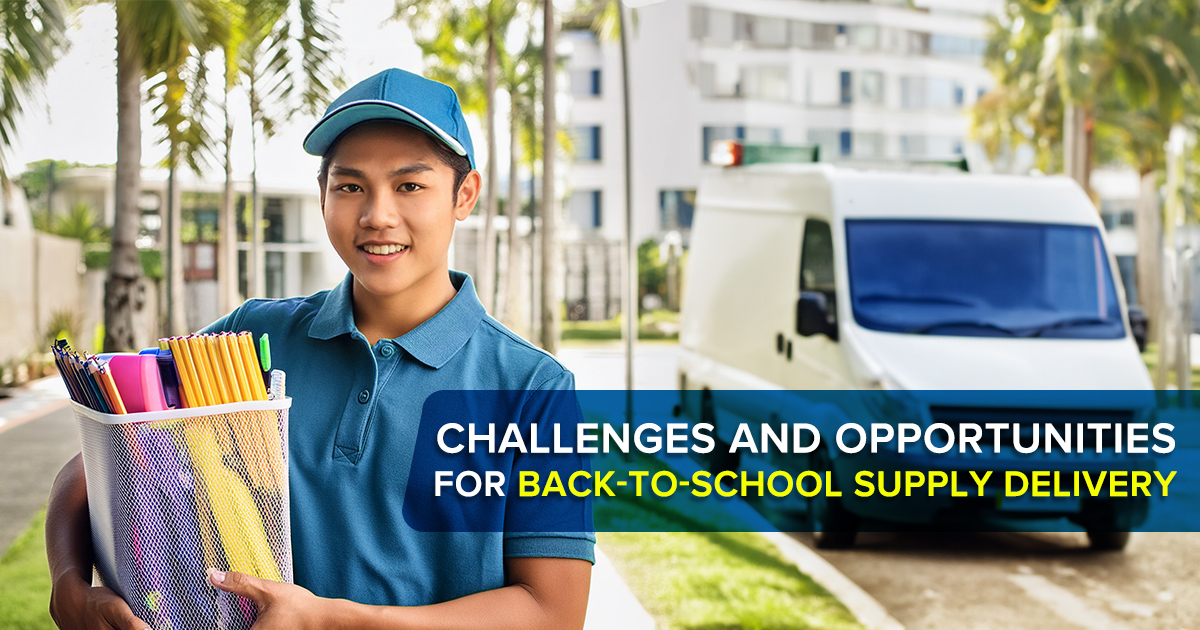
The Evolution of Back to School Supplies Delivery
The educational resource landscape has significantly transformed, driven by demands for convenience and efficiency in acquiring school supplies. Back to school supplies delivery services have become vital, reflecting the evolving needs of a digital-first generation and changing consumer behaviors.
Understanding Back to School Supplies Demand
Success in back to school supplies delivery hinges on understanding complex consumer behaviors, seasonal fluctuations, and educational trends. It’s crucial to comprehend the full scope, from back-to-school rushes to the impact of digital learning tools.
SEE ALSO:
- School Calendar This Year: Shorten By 15 Days
- Back to School, Back to Basics: Mastering Season Logistics
- Welcome Back Students! Prepare for Classroom Supplies Early
Challenges for Supplies Delivery
In the Philippines, especially during the busy back to school season, delivering back to school supplies requires overcoming a number of obstacles. These problems, which range from administrative inefficiencies to legal obstacles, call for meticulous planning and creative solutions to guarantee that every student receives the necessary educational resources on schedule. Let’s examine these difficulties in more detail:
Logistical and Infrastructure Inefficiencies
Congested road networks, especially in urban areas like Metro Manila, and insufficient transportation facilities in rural areas hinder the timely delivery of back to school supplies.
Economic Disparities and Market Dynamics
In economically disadvantaged areas, there’s a high demand for affordable back to school supplies, yet these are often the regions with the least access. Providers face the challenge of balancing cost and accessibility while dealing with fluctuating market prices and demand spikes, which can lead to stock shortages and pricing disparities.
Corruption and Bureaucracy
Delays in customs, unnecessary regulatory requirements, or corrupt practices can stall the import and distribution of educational supplies, affecting their availability and cost.
Lack of Standardization in Educational Materials
Discrepancies in curriculum requirements and material specifications can lead to inconsistencies in the quality and relevance of back to school supplies provided. Delivery services must adapt to these varied needs, which requires extensive coordination with educational institutions and understanding regional educational policies.
Resistance to Technological Adoption
The resistance can stem from a lack of training, understanding, or trust in technological solutions, leading to a preference for traditional, less efficient methods. Overcoming this challenge involves not only providing the technology but also ensuring adequate training and support for its adoption.
Opportunities for Back to School Supplies Delivery
Building Trust
For back to school supplies delivery businesses, reliability and integrity are paramount. Strategies like consistent communication, personalized services, community engagement, a robust feedback loop, and transparency in operations can establish and maintain trust with customers.
Operational Foundations for Success
Effective back to school supplies delivery relies on meticulous logistics, from inventory management and supplier relations to transportation choices and technology integration. Ensuring smooth operations sets the stage for success.
Optimizing the Ordering Process
Advanced technology plays a crucial role in refining the ordering process, enhancing both customer experience and operational efficiency. Implementations like automated order management systems, CRM integrations, and mobile applications are transformative.
Engaging Your Target Audience
Identifying and connecting with the target audience is essential. This involves customer profiling, leveraging data for insights, engaging with the community, employing targeted digital marketing, and maintaining an active feedback loop.
Securing Customer Satisfaction and Repeat Business
The quality of customer interactions can define a business. Personalizing services, responding swiftly to inquiries, engaging in active feedback loops, and offering loyalty programs are key strategies to encourage repeat business.
Business Scaling Through Partnering with a Reliable Delivery Provider
Scaling a back to school supplies delivery business involves strategic planning and execution to maintain service quality while meeting growing demands. These are mostly executed by partnering with a delivery service provider known for these kinds of deliveries. Benefits include:
- Enhanced Accessibility: Logistics providers like LBC Express, J&T Express, and 2GO utilize extensive networks that reach even the most isolated islands and rural locations, leveraging sea and air freight capabilities to bridge the gap between suppliers and students across the archipelago.
- Time Savings and Convenience: Companies such as Ninja Van and Grab Express emphasize doorstep delivery, which is invaluable during the hectic back-to-school season.
- Support for Education Continuity: Providers like Lalamove and FedEx have demonstrated resilience in maintaining supply chains under adverse conditions like during COVID-19. Their preparedness and adaptability in crisis situations help sustain educational continuity, which is vital for student progress.
- Economic Benefits: Streamlined logistics and bulk purchasing are areas where providers like Transportify and Air21 bring significant advantages. By optimizing their delivery routes and offering bulk transport options, these providers can reduce overall logistics costs.
Future Trends in Educational Supplies Delivery
Looking ahead, the delivery of educational supplies must adapt to innovations like AI-driven logistics and sustainable practices. Anticipating future challenges and being adaptable to market changes will be crucial for long-term success.
